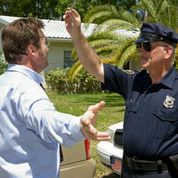 In the state of North Carolina, a police officer must have reasonable and articulable suspicion prior to pulling someone over. In the event the officer has met that burden, he is entitled to administer a series of tests if he then believes that the person has been consuming alcohol, or is in any other way impaired while operating a motor vehicle. Typically, the officer smelling an alcohol odor emanating from the vehicle is enough to begin to administer the tests.
In the state of North Carolina, a police officer must have reasonable and articulable suspicion prior to pulling someone over. In the event the officer has met that burden, he is entitled to administer a series of tests if he then believes that the person has been consuming alcohol, or is in any other way impaired while operating a motor vehicle. Typically, the officer smelling an alcohol odor emanating from the vehicle is enough to begin to administer the tests.
You all know these tests as the commonly referred to ” field sobriety tests.” Specifically, the most infamous one is the 9-step walk and turn. If you have ever been pulled over by an officer and been given a field sobriety test, this was most likely the first one.
The 9-step walk and turn is a test that the officers are taught to test the driver’s coordination and balance; as well as looking for how well they follow direction.
This is the test you always see in the movies where the officer asks the alleged impaired driver to get out of the vehicle, and walk an invisible straight line heel to toe for 9 steps, then turn around and do the same thing back to the officer; totalling 18 steps. Furthermore, the defendant is required to count each step out loud until the test is completed.
So, the question obviously begs, what is the officer looking for in this 9-step walk and turn test? Accordingly, the officer is observing if your heel is actually touching the other foot’s toe on each step, how stable you are as “walk the invisible line,” if you are using your arms to balance yourself, and if you have listened to his directions explicitly, then following them to the “T.” If there is any deviation from what the officer is looking for, you have most likely been docketed as failing your first field sobriety test.